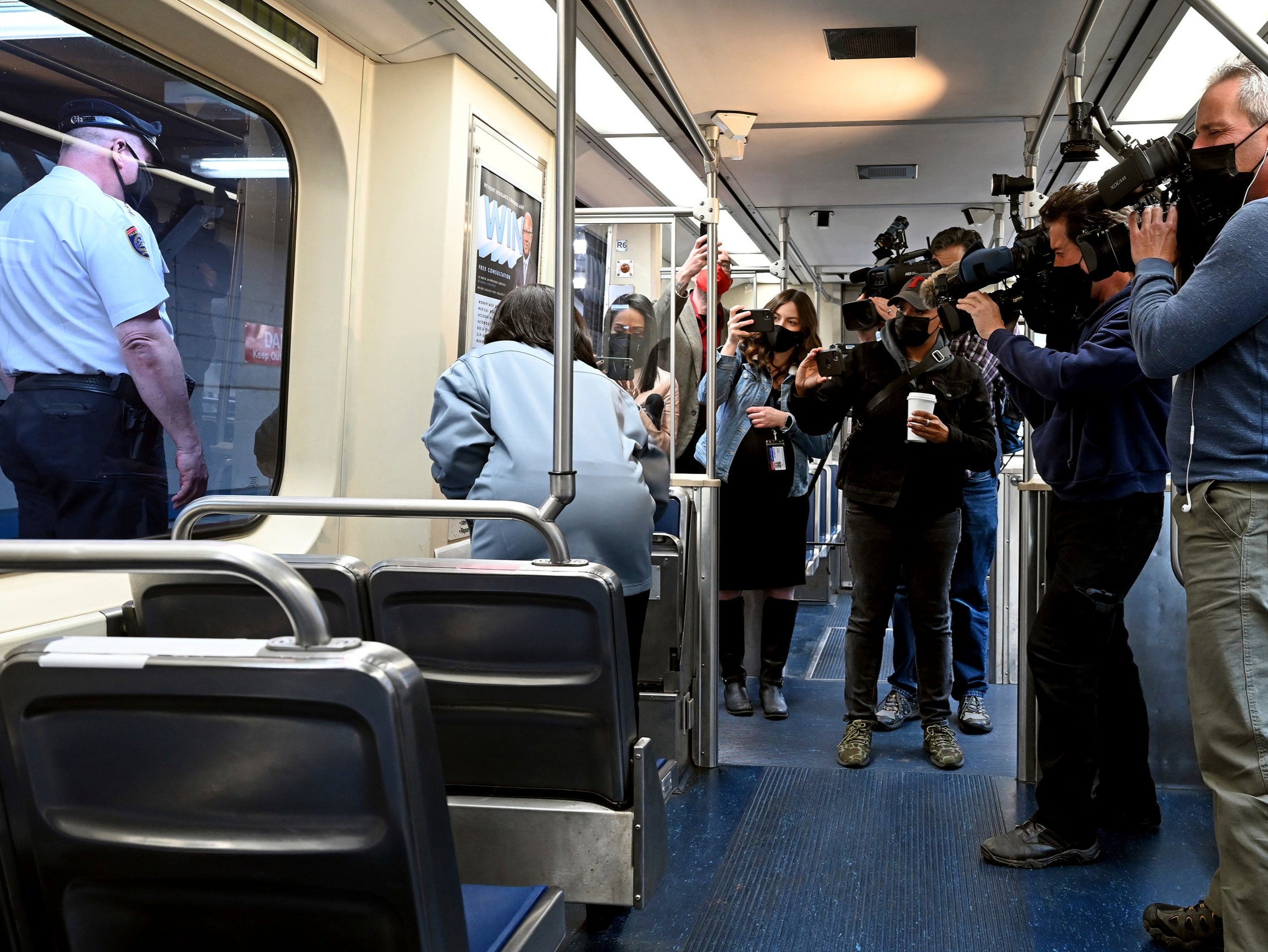The Independent's journalism is supported by our readers. When you purchase through links on our site, we may earn commission.
The Philadelphia train attack is a warning: ‘digital witnesses’ do not keep us safe from sexual assault
Reports of people filming a rape on a far-from-empty train raise the ominous spectre of the ‘digital witness’ – the bystander who records a crime while declining to intervene


There were other passengers present when, on a suburban commuter train outside of Philadelphia, a 35-year-old man approached, harassed, then raped a woman in an assault that lasted about eight minutes. But, as police told local news, none of the other passengers intervened or called 911. It was a Southeastern Pennsylvania Transportation Authority (SEPTA) employee who stepped onto the train, witnessed the assault, and reported it to the authorities.
“It’s disturbing that there were definitely people on the El and no one did anything to intervene or help this woman,” Superintendent Timothy Bernhardt of the Upper Darby Police Department said in a statement. Police say the rape was caught on surveillance footage – footage that also shows that other people witnessed the attack and could have called 911 or collectively intervened to stop it, but did not.
The report cannot help but call to mind Kitty Genovese, said to have been murdered in the presence of 30 onlookers who did nothing. Though ultimately proven false, the Genovese myth still gave rise to the sociological theory called the “Bystander Effect.” The phenomenon occurs when a collection of bystanders witness a crime, but are prevented from acting by a belief that someone else will act first or fear of retaliation. Sociologists refer to a “diffusion of responsibility.”
Bernhardt also stated that police were investigating reports that some passengers may have captured videos or photos of the rape on their phones, which introduces an additional element to the story. What if Americans simply believe that viral video is the only way to achieve justice? Perhaps this story is another example of what some have termed the “digital bystander,” in which onlookers believe that capturing the moment on video and potentially posting it to social media is equivalent to taking action. A 2017 article in Quartz by writer Keshia Naurana Badalge pointed to the viral video of a man being violently removed from a United Airlines flight as an example. None of the other passengers stepped up to help the man or stop what was happening, but many did take out their phones to begin recording, and the video then went viral on social media.
But witness videos, and the public outcry they can engender, are not universally toothless. In 2020, a witness took a cell phone video of two white men chasing down jogger Ahmaud Arbery in a pickup truck and shooting the unarmed Black man to death. Without the video, it’s highly possible, even likely, that the two men would not have been charged with Arbery’s murder. At the same time, the witness who took the video faced public scrutiny, by those who suspected he was involved with the crime himself and those who felt he should have done more to intervene.
Videos taken by bystanders have also been instrumental in uncovering police brutality and the killings of unarmed Black men by police – not least the footage of Derek Chauvin killing George Floyd, which set off massive waves of national protests and put additional pressure on the need for police reform.
But unlike those cases, this rape was not a crime perpetrated by police, or one in which there was a clear danger to the witness. One further complication is the frequency by which bystanders fail to intervene in cases of sexual assault specifically. Research indicates that rape myths (“She asked for it”; “He didn’t mean to”; “It wasn’t really rape”; “She lied”) contribute to bystanders failing to intervene in cases of sexual assault.
Women will often say how they choose to avoid public train cars with no other passengers, believing themselves safer from such violence if there are other people around to put a stop to it. But what does this case say about how much safety bystanders and witnesses really provide? Given the complexity of the digital bystander and cultural unwillingness to intervene in cases of sexual assault, what should we really take away from this story?
Said Bernhardt, “It speaks to where we are in society; I mean, who would allow something like that to take place? So it’s troubling.” Bystander intervention is thought to be an important tool in preventing sexual assault, per research, and some college campuses have implemented bystander training programs to help reduce sexual violence. One reason often cited for lack of bystander intervention is the belief that someone else will do it. So whose responsibility is it?
Speaking to The New York Times, criminologist Alexis Piquero said, “The onus is really on us as a collective because we can’t always rely on the police.” Nor, it seems, can we always rely on one another.
Join our commenting forum
Join thought-provoking conversations, follow other Independent readers and see their replies
Comments
Bookmark popover
Removed from bookmarks